Havana Night Club


Havana Night Club
¡Una noche espectacular de HAVANA NIGHT SHOW!
HAVANA NIGHT CLUB celebra su primer año de éxodo con el lanzamiento de su DVD totalmente grabado en sistema de alta definición (HD-DVD)
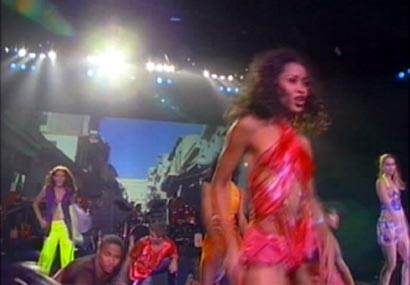 El 16 de noviembre en el tradicional Teatro Tower de la Calle 8, en la ciudad de Miami, se llevó a cabo el lanzamiento del DVD de HAVANA NIGHT SHOW, 'Celebrate Freedom Show' desde Miami, filmado el pasado 10 de marzo en la Universidad de Miami
El 16 de noviembre en el tradicional Teatro Tower de la Calle 8, en la ciudad de Miami, se llevó a cabo el lanzamiento del DVD de HAVANA NIGHT SHOW, 'Celebrate Freedom Show' desde Miami, filmado el pasado 10 de marzo en la Universidad de Miami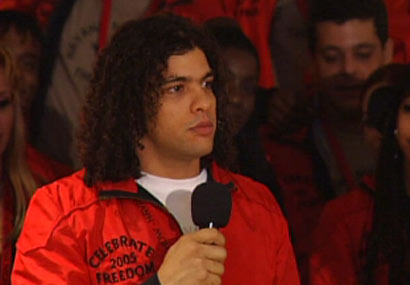 Miami, FL--(HISPANIC PR WIRE)--18 de noviembre de 2005--Fue una noche llena de emociones. La revista musical latina más importante del momento, HAVANA NIGHT CLUB, que lleva mas de un año presentándose en el hotel Stardust de la ciudad de Las Vegas, es el grupo artístico más numeroso en haberse exilado de la isla de Cuba.
Miami, FL--(HISPANIC PR WIRE)--18 de noviembre de 2005--Fue una noche llena de emociones. La revista musical latina más importante del momento, HAVANA NIGHT CLUB, que lleva mas de un año presentándose en el hotel Stardust de la ciudad de Las Vegas, es el grupo artístico más numeroso en haberse exilado de la isla de Cuba.Nicole ND Durr, su progenitora, directora y creadora, llenó al público presente de emoción, humor y sentimiento al impresionar a todos con su espontánea sinceridad y agradecimiento relatando anécdotas de este año tan significativo para todos. Acto seguido comenzó la actuación acústica del grupo interpretando grandes canciones del show como Marieta, compuesta e interpretada por primera vez en público por Dikan.
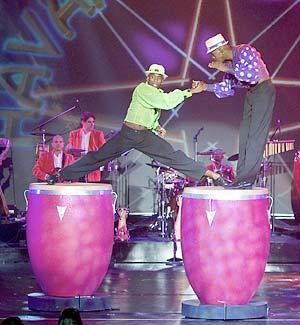
Acto seguido Deyanira lo acompañó y realizando un sólo fuera de serie, lleno de dulzura y clase en una cálida presentación del tema histórico de Beny Moré, “Oh vida”. Inmediatamente, el cuerpo de baile procedió a complementar la magia de esta noche con ritmos y bailes llenos de energía y color.
La excelente actuación cerró con una conferencia de prensa donde ND y sus “hijos escénicos” jugueteaban y respondían espontáneamente las preguntas del selecto grupo de invitados que procedieron a ovacionar a ND, y al incomparable elenco por su admirable labor.
ND realizo una subasta a beneficio de AMIGOS TOGETHER FOR KIDS, de su colección de autoría exclusiva y edición limitada de Cuba Art, CARA LINDA.
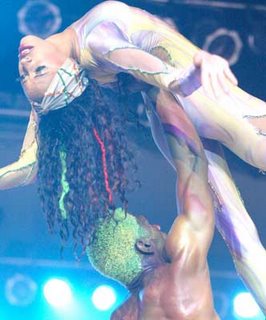
El Teatro Tower fue el oasis de personalidades que se dieron cita a esta celebración. Entre muchos podemos mencionar el tierno momento donde el icono de la música cubana, OLGA GUILLOT, se levantó y le agradeció a ND por su labor y visión al poder reunir un elenco de la magnitud y talento que el cuerpo de baile y canto de HAVANA NIGHT logró cosechando el respeto merecido de todos los presentes. La cantante y modelo Sissy también dijo presente. CRISTINA REBULL, la diva cubana que muchos comparan con Edith Piaf, también demostró su respeto aplaudiendo efusivamente la actuación especial de la noche.
HAVANA NIGHT CLUB, no deja de hacer historia dondequiera que se presenta. Fue una noche mágica, donde todos los presentes se transportaron en el viaje de la música y el espectáculo compartiendo la maravilla de celebrar el primer año de libertad de HAVANA NIGHT CLUB.
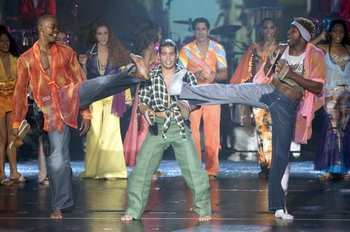
Para más información: http://www.havananightshow.com
SHOW REVIEW: 'Havana Night Club'
By MIKE WEATHERFORD
REVIEW-JOURNAL
The first section of "Havana Night Club" is a stylized visit to the jungle "where rhythms were born" as a narrator says.
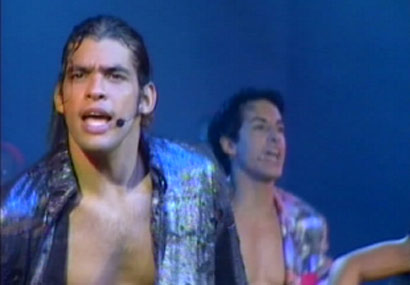
The Havana clubs of the '40s shared the same stars and mob ownership as the Strip, and so the floor show styles were similar as well, artistic director Nicole Durr explains.
Wayne Newton's "MacArthur Park" curtain of rain pours down in the middle of "Havana Night Club," and that's not the only touch of Vegas you feel in a show straight from Cuba.
Nicole Durr, the show's creator, points out that any feelings of deja vu are understandable. The same mobsters of the 1940s and '50s controlled casinos in both Las Vegas and Havana, sharing stars such as Nat King Cole and giving Havana equal claim to the floor-show style celebrated in "Havana Night Club."
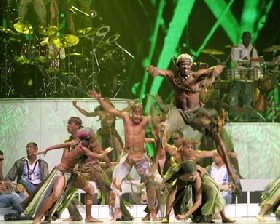 Fair enough. But other aspects of the revue, from costumes to choreography, still seem more familiar than they probably ought to. And the youthful cast often seemed a bit reigned in by a showroom/cruise ship format that sticks to the standard perceptions of Cuban culture.
Fair enough. But other aspects of the revue, from costumes to choreography, still seem more familiar than they probably ought to. And the youthful cast often seemed a bit reigned in by a showroom/cruise ship format that sticks to the standard perceptions of Cuban culture.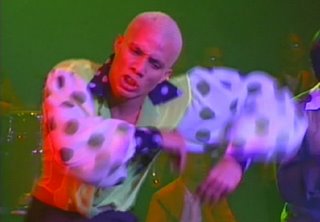
Fortunately, the music and exuberant energy of the performers transcends any such boundaries. By the barefoot finale, ticketbuyers are asked to dance and clap along, as they are in many shows on the Strip. The difference here is that the invitation seems sincere. The cast is so enthusiastic, the rhythms so liberating, you're inclined to take them up on it.
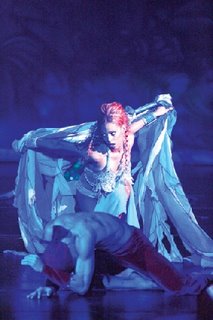
Some of the familiarity might be explained by the mainland involvement of Kenny Ortega, brought in by presenters Siegfried & Roy to tweak Durr's traveling revue for the Strip. He's the veteran choreographer who has worked on Las Vegas shows since Cher played Caesars Palace in the early '80s, and he recently helmed the makeover of the Treasure Island pirate battle and Gloria Estefan's "Unwrapped" concerts at Caesars.
You could wonder how the material might have been shaped by someone from outside the casino world: Perhaps the more angular visions of David Byrne, who champions Cuban music on his Luaka Bop label, or Ry Cooder, who pulled together "The Buena Vista Social Club."
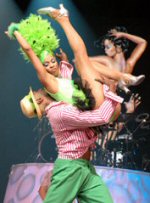 As it is, the revue follows a simple three-act structure and timeline, tracing Cuban music from the jungles to present-day Havana. For better or worse, it downplays its own significance -- claiming to be the first show of its size to play the United States in 50 years -- and the behind-the-scenes drama of getting it here.
As it is, the revue follows a simple three-act structure and timeline, tracing Cuban music from the jungles to present-day Havana. For better or worse, it downplays its own significance -- claiming to be the first show of its size to play the United States in 50 years -- and the behind-the-scenes drama of getting it here.Political entanglements detained the cast in Cuba for three weeks of its scheduled Stardust run. Enough performers were finally cleared for visas to allow a curtailed run to begin last weekend, continuing through Sept. 5. Even after it opened, the cast continued to rehearse each afternoon of this week to polish the show and cover for colleagues who had still not arrived.
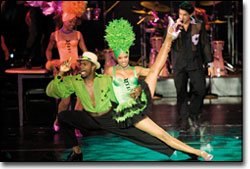
 Things begin promisingly with an African heritage "Roots" section. Striking vocalist Yahima sings to sparse drum and piano accompaniment, paving the way for a series of sensuous folk dances by the ensemble.
Things begin promisingly with an African heritage "Roots" section. Striking vocalist Yahima sings to sparse drum and piano accompaniment, paving the way for a series of sensuous folk dances by the ensemble.The scenery changes from jungles to streetscape to show the Spanish side of the Cuban heritage with flamenco music and dance. But the fun seems a little forced, until narrator Jose David del Valle sets up a "coffee dance" for the audience: "First you have to climb the mountain ... then you have to pick the beans," he coaches as the energy builds.
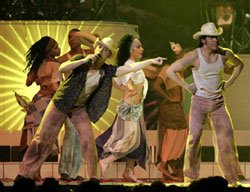 The next segment is the most Americanized, celebrating the Havana nightclub scene of the '40s with pantomimes that teeter close to the edge of an old "Carol Burnett Show" routine.
The next segment is the most Americanized, celebrating the Havana nightclub scene of the '40s with pantomimes that teeter close to the edge of an old "Carol Burnett Show" routine.Couples do the cha-cha, mambo and rumba as featured singers Manuel Primo and Dikan lead the audience through a mini-story of love lost and found again, complete with a "Quarter-to-Three" ballad. Though sung in Spanish, it's still more universal than other parts of the show, in which non-Spanish speaking patrons could use a bit more of narrator del Valle's English guidework.
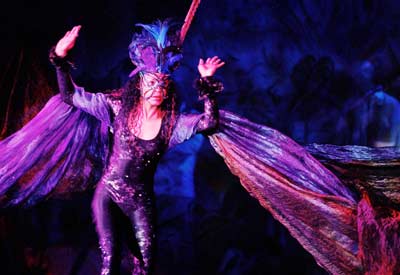
The nightclub is also the place where a formidable band really begins to strut its stuff. Hidden behind a scrim in the early going, the 13-piece band explodes with a stratospheric four-part horn section and twin percussionists.
By the third, present-day segment, the performers are matching the band's enthusiasm. It's not that the music is different; it's hard to believe hip-hop and U.S. pop haven't corrupted the island so close to Florida. But at least the attitude is contemporary when the cast uses wooden sandals for a chancleta, a syncopated frenzy of stomping rhythms.
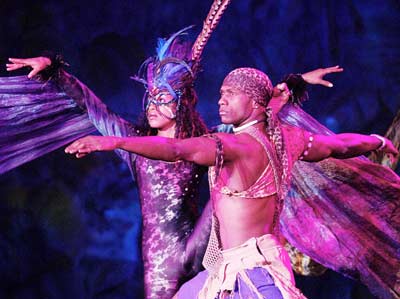 Audiences will leave rooting for the show to come back, even if they also hope for a little more Cuba and a little less Vegas the next time around. Until that day, whenever it may be, a soundtrack album would be a cool souvenir.
Audiences will leave rooting for the show to come back, even if they also hope for a little more Cuba and a little less Vegas the next time around. Until that day, whenever it may be, a soundtrack album would be a cool souvenir.

0 Comments:
Post a Comment
<< Home